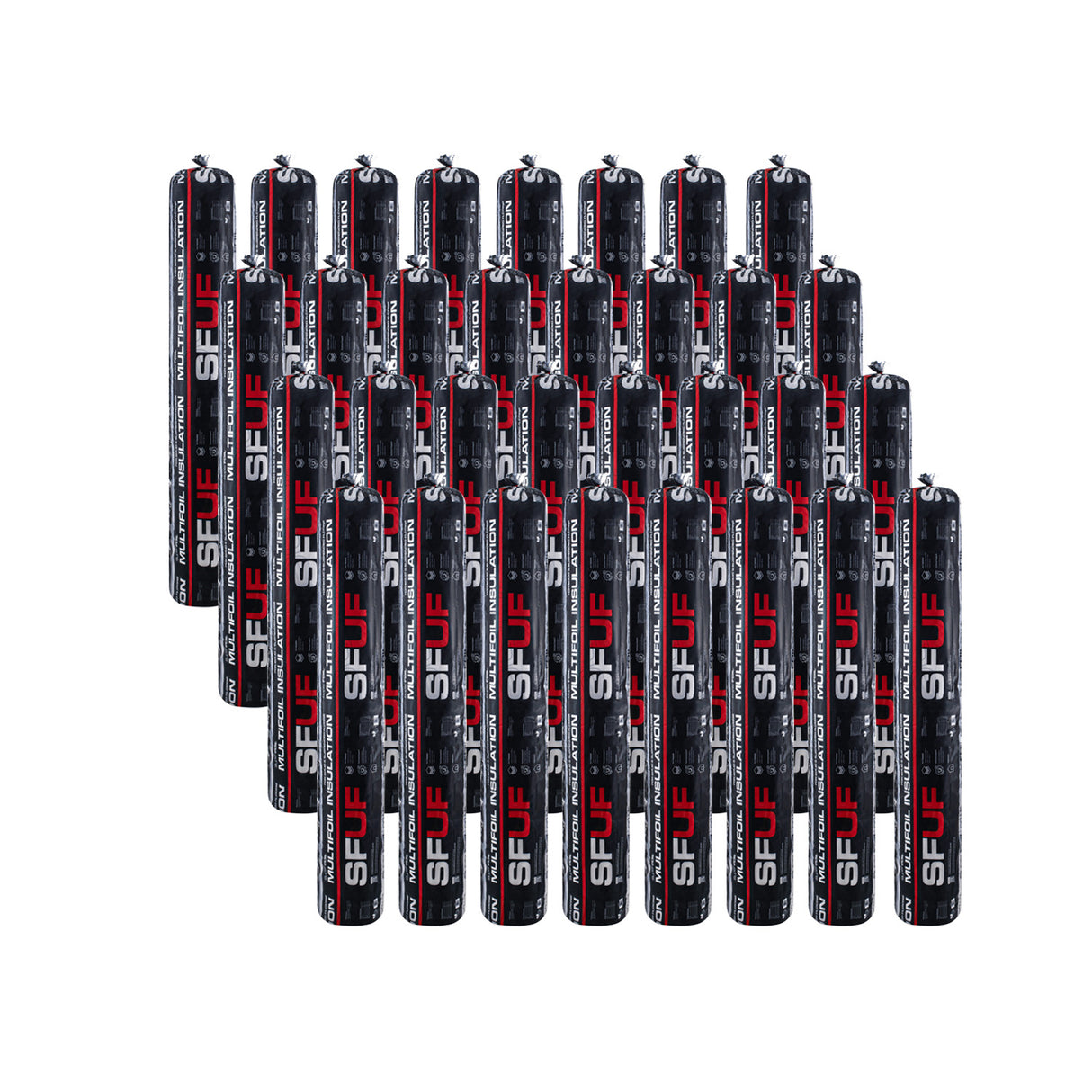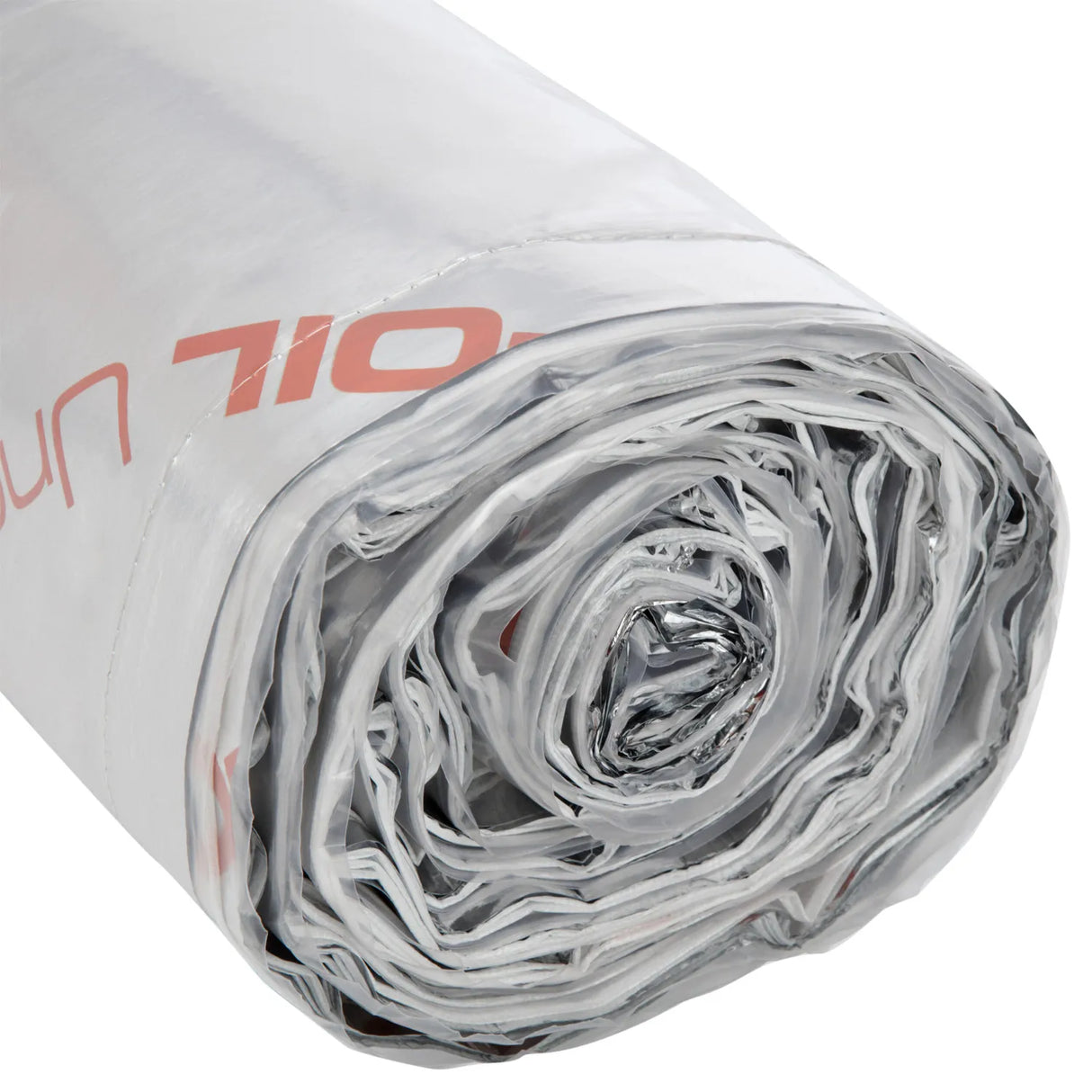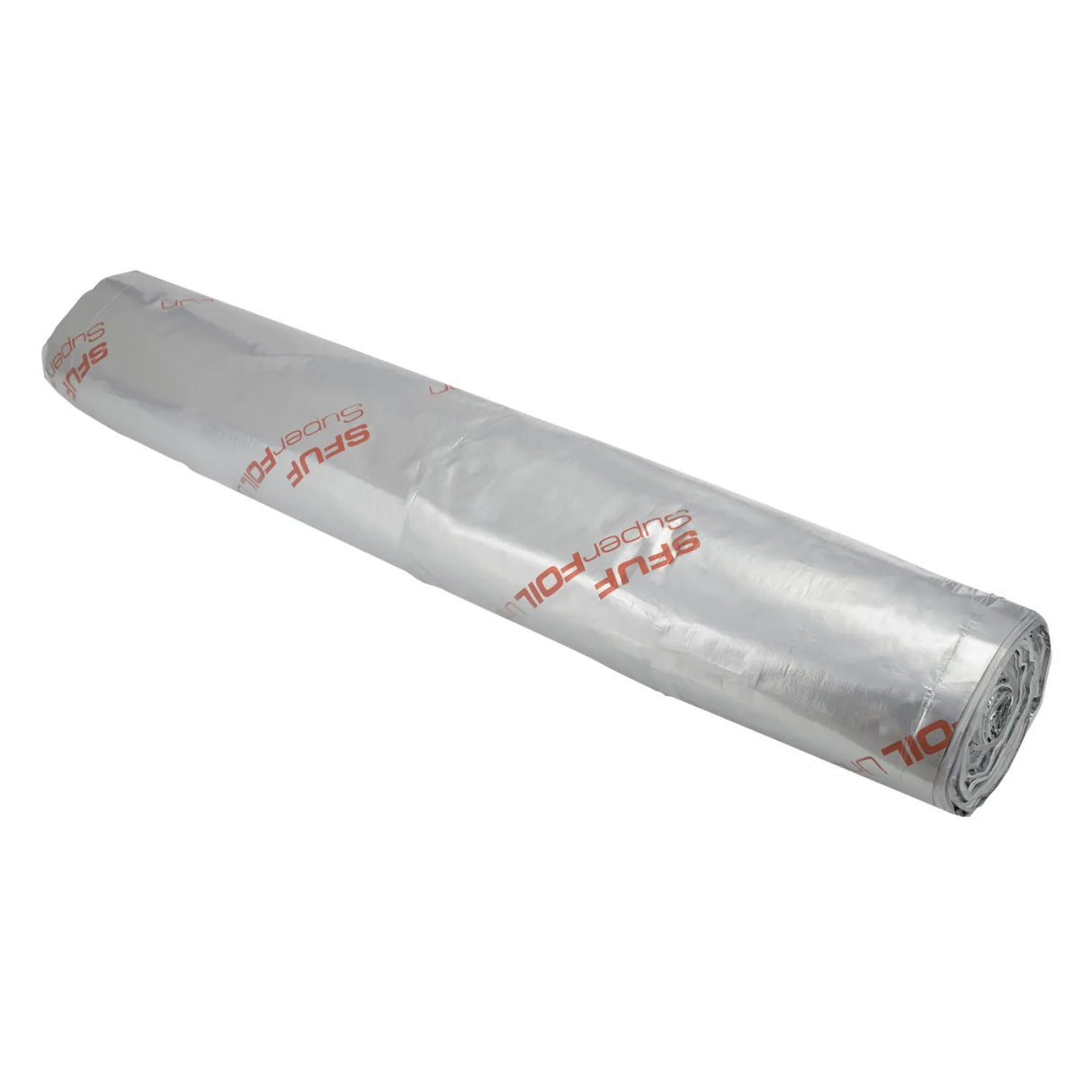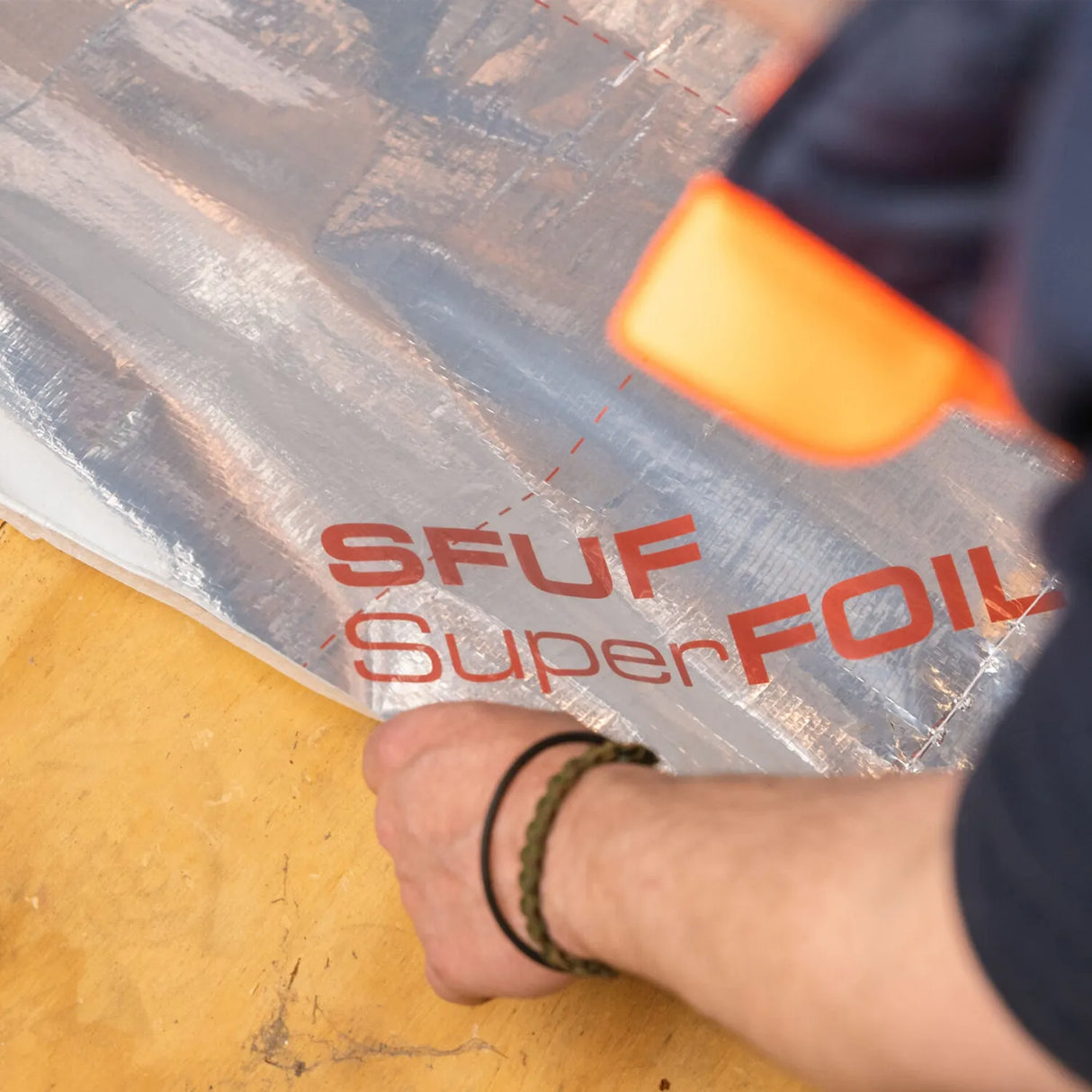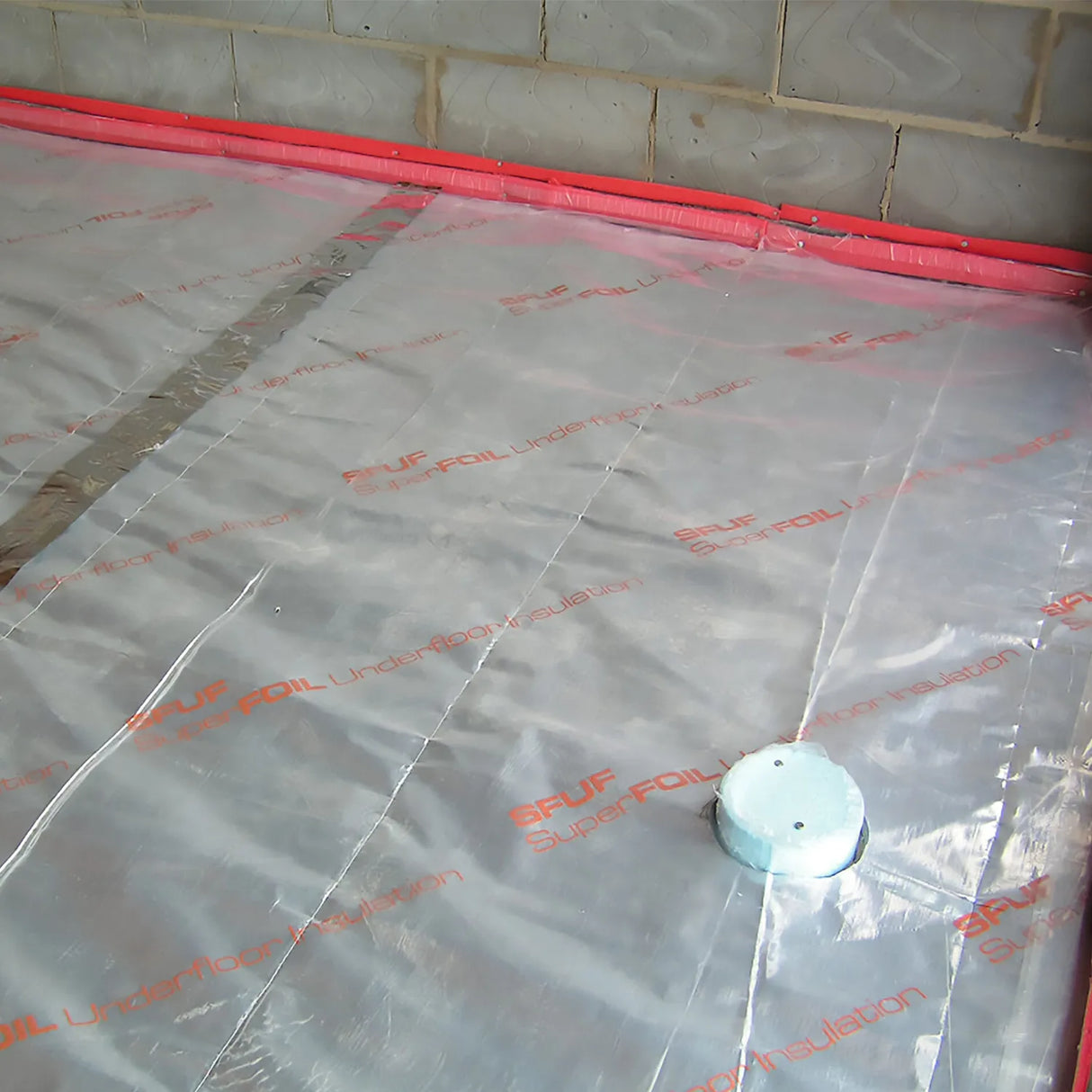SuperFOIL 6mm SFUF Floor Insulation Roll - 1.5m x 10m - 32 Pack (480m²)
SuperFOIL 6mm SFUF Floor Insulation Roll - 1.5m x 10m - 32 Pack (480m²) is backordered and will ship as soon as it is back in stock.
For large projects, our SuperFOIL SFUF is available in a pallet of 32 rolls - perfect for extensions or renovations. Originally designed for - but not limited to - flooring applications, The SuperFOIL SFUF Is made of heavy duty polythene, thermo foam, and aluminium coated PET layers sandwiched between two layers of heavy duty laminated foil, to create an insulating layer ideal for use with underfloor heating, over and under suspended concrete or timber floors or even to insulate underfloor radiant heating pipes.
A 3-in-1 design, the SFUF Multifoil floor insulation functions as foil insulation, a vapour control layer and a radiant barrier. SuperFOIL SFUF is a lightweight material that’s easy to handle and very DIY friendly.
- Achieves an R Value of 0.8 in Roofs, Walls and Floors
- Ideal for New Builds, Extensions and retrofits
- Simple installation with basic tools and supplies
- Space-saving size with effective insulating properties
What is Multi foil insulation?
Multi-foil insulation is a type of thermal insulation material composed of several layers of reflective foil, often with additional materials such as foam or bubble wrap sandwiched in between. The reflective foil layers work by reflecting radiant heat, preventing it from entering or escaping a building, thus helping to maintain desired temperatures and improve energy efficiency. This type of insulation is popular for its lightweight and flexible nature, making it easy to install in various construction applications, such as roofs, walls, and floors. Multi-foil insulation is known for its high thermal performance and is often chosen for its effectiveness in reducing heat loss or gain in buildings.
What is a Vapour Control Layer (VCL)?
A vapour control layer (VCL), also known as a vapour barrier, is a material used in building construction to prevent the passage of water vapour through walls, ceilings, floors, or roofs. It is typically installed on the “warm” side of the insulation (typically the interior side) where it helps to control moisture levels within the building envelope. By blocking the movement of water vapour, a VCL helps to prevent condensation from occurring within the building structure, which can lead to issues such as mould growth, rot, and reduced insulation effectiveness.
What is a Radiant Barrier?
A radiant barrier is a type of material designed to reduce radiant heat transfer. Radiant barriers work by reflecting radiant heat away from the surface they cover, which helps to keep spaces cooler in the summer and warmer in the winter. They are often installed in attics, under roofs, or in walls where they can block the transfer of radiant heat from the sun or from indoor heating systems. By minimising radiant heat transfer, radiant barriers can help improve energy efficiency and increase comfort levels within buildings.
How to install SuperFOIL SFUF?
There are many different types of floors that SFUF can be used with, so it is best to investigate the specific use case before installing, but generally the insulation is laid below the flooring, with joints butted to prevent excessive overlap, and sealed with insulation tape. The SFUF may need to be stapled to joists or otherwise secured depending on the use case.
Data Sheets & Guides:
SuperFoil Under Rafter Installation Guide
SuperFoil Over Rafter Installation Guide
-
Size
-
Coverage (m²)
-
Thickness
-
Length10m
-
Width1.5m
-
Material
-
Estimated Lifespan
-
Thermal Resistance
-
Water Resistance
Large Order or Specific Requirement?
CALL OUR TEAM
0115 6976 800

